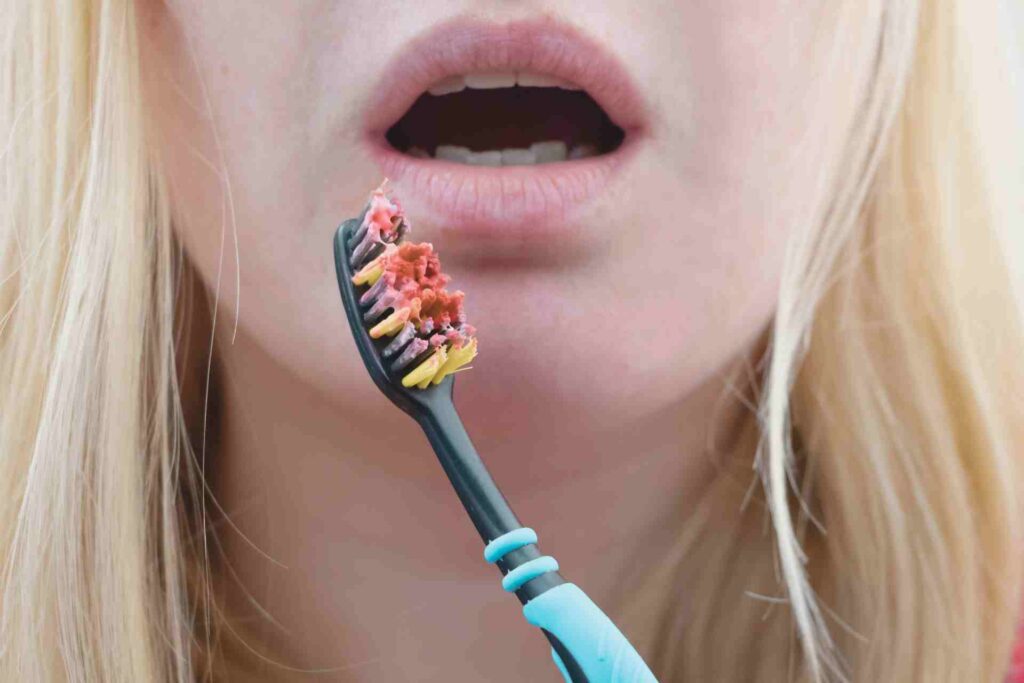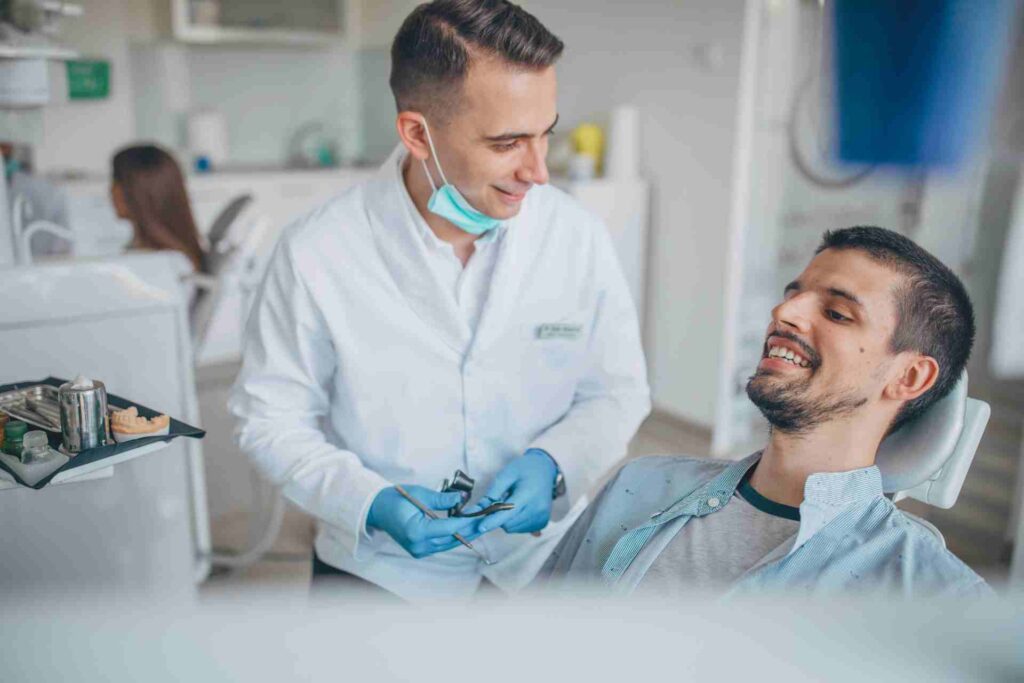Why You Shouldn’t Ignore Early Periodontal Disease
Bleeding gums, bad breath, or slight gum swelling might seem minor, but they could be the first signs of early periodontal disease.
Periodontal disease is a progressive infection of the gums that begins with inflammation. If left untreated, it can cause gum recession, bone loss, and even tooth loss over time.
The good news? When caught early, it’s often reversible with professional care and good daily habits.
Spotting the warning signs early is the best way to protect your smile long-term.
What Is Early Periodontal Disease
If your gums bleed a little when you brush or floss, you might shrug it off. But that small sign could point to something more than just sensitive gums.
Early periodontal disease is the first stage of gum disease beyond gingivitis. While gingivitis causes red, swollen gums and occasional bleeding, early periodontitis goes a step further. At this stage, the gums may start to pull away from the teeth. It forms small pockets where bacteria can accumulate.
You might notice symptoms like:
- mild gum recession
- bleeding when brushing
- persistent bad breath
…or that your gums just don’t look as healthy as they used to.
The good news is that this stage is still very treatable. With proper care, including regular cleanings and daily brushing and flossing, you can stop it from progressing. There are treatment options for gum disease and gingivitis that you and your dentist can explore!
What Are the First Signs of Periodontitis

Early periodontal disease often creeps in quietly. You might not feel pain at first, which is why it’s so easy to overlook. But your gums usually give you subtle hints that something’s off.
Here are some of the first signs to look out for:
- Gums that bleed excessively when you brush or floss
- Redness or puffiness around the gumline
- Slight gum recession that makes your teeth look a bit longer
- Persistent bad breath, even after brushing
- A feeling that your gums are more tender than usual
- A bad taste in your mouth you can’t explain
Sometimes it starts with a single area, like a swollen gum around one tooth, as an early gum disease sign. Other times, you might notice bleeding gums as an early periodontal warning sign.
These early symptoms are your body’s way of waving a red flag. The sooner you respond, the easier it is to reverse the damage and get your gums back on track. Ignoring the signs leads to more serious problems, including bone loss and even tooth loss.
What Causes Early Periodontal Disease
Early periodontal disease doesn’t just happen overnight. It usually builds up quietly over time, often due to everyday habits that seem harmless at first.
One of the biggest culprits is poor brushing and flossing. When plaque sits on your teeth too long, it hardens into tartar. That buildup irritates your gums and creates the perfect environment for bacteria to thrive.
Smoking is another major risk factor. It restricts blood flow to your gums, which makes it harder for them to heal and fight off infection.
Hormonal changes, certain medications, and even genetics can also play a role.
If you’re not consistent with your oral care, you’re more likely to develop gum disease from poor oral hygiene. And once tartar forms, it can only be removed by a dental professional. That’s why removing tartar buildup to protect your gums is such an important step in prevention and early treatment.
Can You Reverse Early Periodontal Disease
Yes, in many cases, early periodontal disease can be reversed, but only if you catch it in time and take action.
At this stage, the damage to your gums is still minimal. With consistent oral hygiene and the help of your dental team, you can stop the disease from progressing and even repair some of the early damage.
The first step often involves a professional deep cleaning known as scaling and root planing for early periodontal disease. This removes plaque and tartar buildup below the gumline, where brushing alone can’t reach.
At home, daily brushing and flossing are non-negotiable. Tools like water flossers and antimicrobial rinses can also help.
The key is consistency. A few small changes in your daily routine, along with early intervention, can completely change your outcome.
How to Care for Your Gums at the First Sign of Disease

Noticing a little bleeding when you floss? Or maybe your gums look a bit puffier than usual? That’s your signal to take action before things get worse.
Start with the basics:
Floss every day, no exceptions. It’s one of the simplest ways to stop gum disease in its tracks. If flossing feels uncomfortable or makes your gums bleed, that’s actually a sign your gums need more care.
Use an antimicrobial rinse. This can help reduce bacteria and inflammation between the teeth and along the gumline.
Avoid tobacco. Smoking slows healing and increases your risk of gum infections, including periodontitis.
Don’t forget your diet. Leafy greens, crunchy veggies, and foods rich in vitamin C support gum health. And hydration matters too. Water helps flush bacteria and keep your mouth cleaner.
Finally, schedule a professional dental cleaning if it’s been more than six months. Even if your teeth feel fine, your gums might be trying to tell you something. Your hygienist can remove tartar and check for signs of early gum disease that you might miss.
When to See a Dentist for Early Gum Disease
If your gums are bleeding regularly, feel swollen, or just don’t look quite right, don’t wait. These are some of the earliest signs of periodontal disease, and the sooner you act, the easier it is to treat.
You don’t need to be in pain to make an appointment. In fact, by the time gum disease causes discomfort, it’s often progressed beyond the early stage.
Symptoms like chronic bad breath, gum tenderness, or gum swelling isolated to one area are reason enough to call your dentist.

Regular dental checkups are key. Your dentist can catch changes in your gums before you notice them, and your hygienist can help keep things under control with cleanings that go deeper than what you can do at home.
FAQs
Can early periodontitis be cured?
Yes, early periodontitis is often reversible. With prompt treatment, daily flossing, and professional cleanings, you can restore gum health and stop further damage.
Can I live a long life with periodontal disease?
Absolutely. Many people live full, healthy lives with periodontal disease, especially when it’s diagnosed early and managed properly. The key is keeping it under control to prevent progression and avoid complications that can affect your overall health.
Can you get gum disease in your 20s?
Yes, gum disease can start at any age. It’s more common than people realize in younger adults, especially if oral hygiene is inconsistent or lifestyle factors like smoking are involved.
Is stage 1 gum disease reversible?
Early periodontitis, also called stage 1, involves mild bone loss and inflammation beyond basic gingivitis. At this stage, it is still reversible in most cases with proper care.
Can you fix mild periodontitis?
Yes. Mild periodontitis responds well to non-surgical treatments like scaling and root planing, along with improved home care. The sooner you treat it, the better the outcome.
Key Takeaways
- Early periodontal disease is the first stage of gum disease, but is often reversible.
- Watch for symptoms like bleeding gums, bad breath, and gum sensitivity.
- Daily flossing, regular cleanings, and early dental visits can stop it from progressing.
- Taking action early means easier treatment and better long-term oral health.
Want more gum care tips and smile-saving advice? Follow @joycethedentist for real dental talk that’s easy to follow and hard to forget.





















